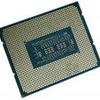Check out the underside of Intel's next twelfth-generation desktop processor, the lga1700 socket. Even more intriguing is the diagram for the Z690 chipset, which is the highest-end model that will be released first.
Expectedly, the CPU has 16 or 2 times 8 PCIe 5.0 lanes, which can be used for graphics or storage, in addition to four NVME 4.0 lanes. What was previously said appears to be correct; the chipset has 12 times gen4 and 16 times gen3 processors. Additional features include support for two DIMMs per memory channel and dual-channel DDR4-3200 or DDR5-4800 with two dimms per memory channel.
- Supports both DDR4 and DDR5, with standard data rates of at least DDR5-4800 compliant on four module configurations.
- Will automatically use Gear 2 or Gear 4 modes for DDR5, running the memory controller at ½ or ¼ speed, depending on data rate.
- Retains 20 CPU PCIe lanes, but 16 of those are increased to PCIe 5.0 data rates.
- Uses DMI 4.0 to connect the CPU to the PCH (chipset) at PCIe 4.0 x8 speeds.
- New PCH has four more PCIe lanes, including 12 PCIe 4.0 and 16 PCIe 3.0.
- Supports up to four USB 3.2 2×2 (20Gb/s) ports.
- New CNVio modules support Intel Wi-Fi 6E, and possibly Wi-Fi 7.
- Uses “Big-Bigger” hybrid cores to improve thread handling while retaining 125W TDP.
- Lower stack height requires new CPU cooler bracket.
Gear 2 is utilized in this case, which means that the controller runs at half the frequency of the memory, resulting in considerable latencies. Gear 1 is also used in this case. It is also possible to use Gear 4 for the expected high speeds at which ddr5 is expected to operate, with the clock speed being reduced by half once more. In order to improve performance, the Direct Media Interface link is being upgraded from DMI 3.0 x8 to PCIe 4.0. Additionally, there are 5 and 1 gigabit Ethernet, four USB 3.2 gen 2x2 ports, and WiFi 6E and 7 standards. The overclockable K and KF models, as well as the Z690 chipset and the remainder of the Alder Lake lineup, are slated to be released on November 19, with the rest of the Alder Lake lineup debuting at CES 2022.
| Cores / Threads | Core Type | 1-2 Core Boost | All-Core Boost | TDP | |
|---|---|---|---|---|---|
| i9-12900K(F) | 8C+8c/24T | P-Core (Big) | 5.3 GHz | 5.0 GHz | 125W |
| E-Core (Small) | 3.9 GHz | 3.7 GHz | |||
| i7-12700K(F) | 8C+4c/20T | P-Core (Big) | 5.0 GHz | 4.7 GHz | 125W |
| E-Core (Small) | 3.8 GHz | 3.6 GHz | |||
| i5-12600K(F) | 6C+4c/16T | P-Core (Big) | 4.9 GHz | 4.5 GHz | 125W |
| E-Core (Small) | 3.6 GHz | 3.4 GHz | |||
Intel Z690 chipset diagram shows PCIe 5.0 x16, DDR4 or DDR5 memory, and DMI 4.0 x8.



